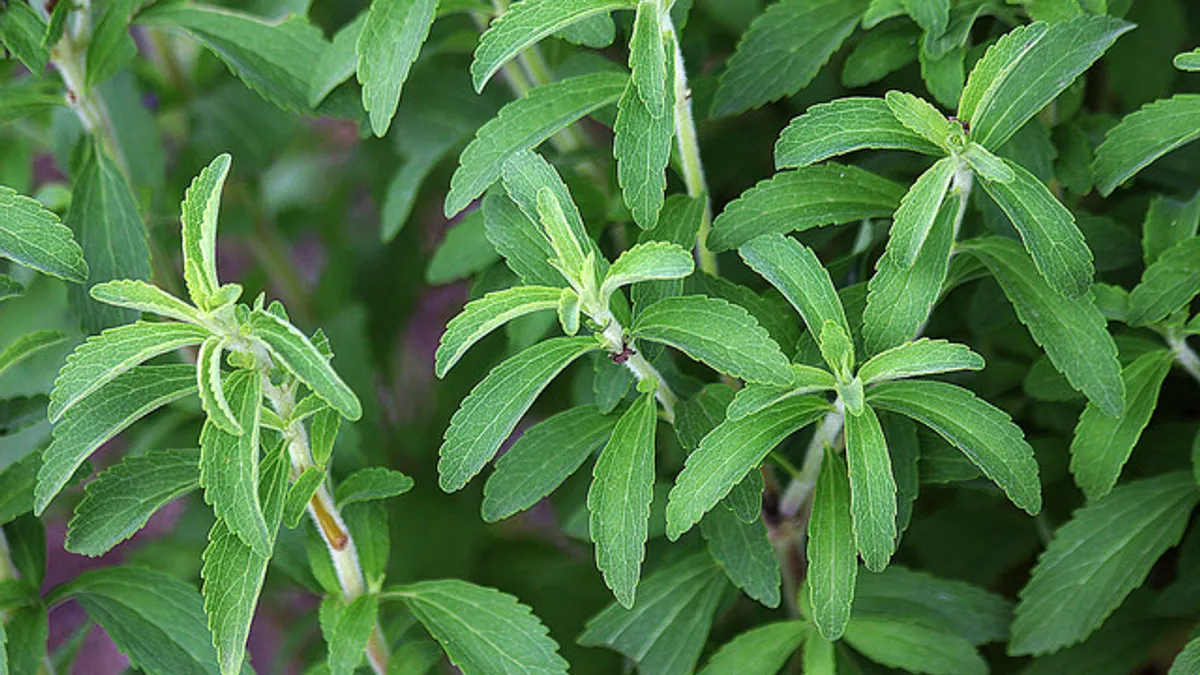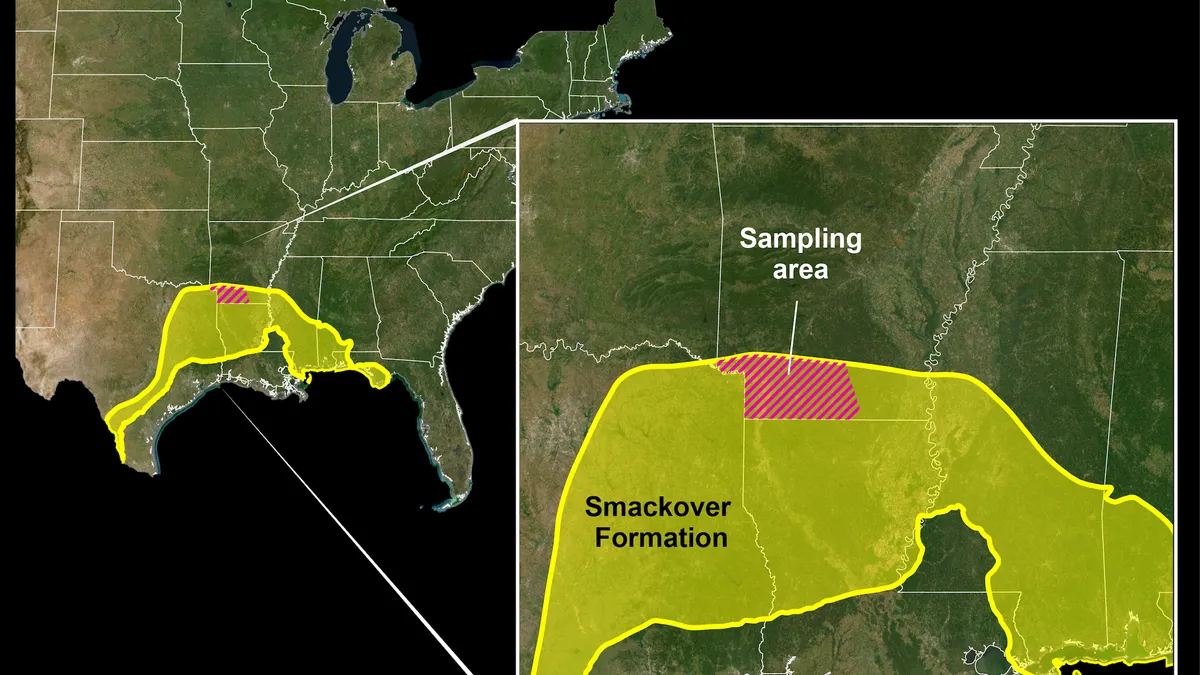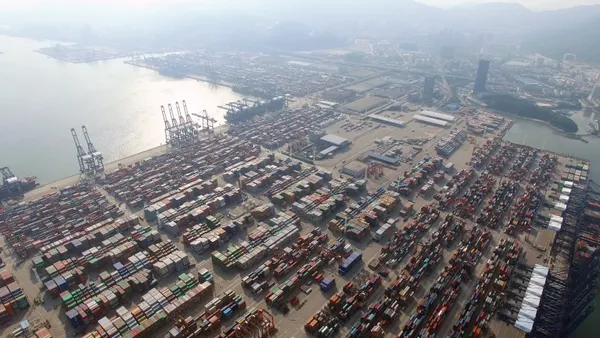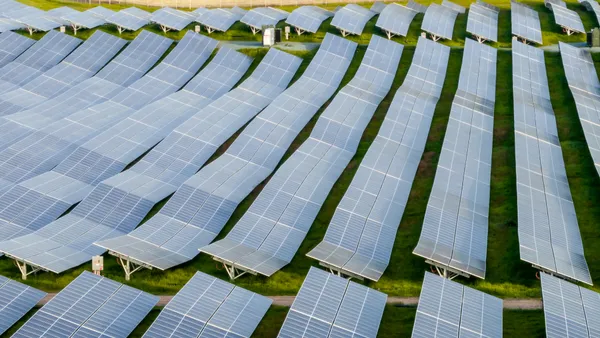Dive Brief:
- Stevia has always been touted as a sustainable and natural alternative to sugar, but now Tate & Lyle and Sweet Green Fields are working with the nonprofit environmental organization Earthwatch to understand the sustainability of the sweetener's supply chain, according to Ingredients Network.
- Much of the world’s stevia is cultivated in China, and this effort will examine and ensure the consistent implementation of sustainable practices.
- The idea of sustainable stevia is taking hold. In 2017, PureCircle took up the gauntlet when they introduced the StarLeaf stevia variety with the aim of producing 20 times the steviol glycosides (the coveted sweet molecules) on the same amount of land in order to reduce water and land usage.
Dive Insight:
As an alternative sweetener, stevia has taken the cake as the industry favorite and experienced explosive growth in the last few years. In the second quarter of 2017 alone, stevia-containing product launches rose more than 13% compared to a year before, according to Mintel. That same year, stevia products outnumbered those sweetened with aspartame for the first time. According to Innova Market Insights, stevia was the featured sweetener in 27% of new products containing high-intensity sweeteners, while 22% used aspartame. In a $16 billion to $20 billion sugar-alternative market, in order to supply this increased demand, the production of stevia has skyrocketed.
However, with the meteoric growth of any product comes questions of sustainability. As the sweet compounds of stevia are naturally 30 to 40 times sweeter than sugar, a little goes a long way, so manufacturers can use far less of the ingredient. At the same time, it doesn’t necessarily mean that less agriculture is required to produce this sweetener. Reb M is the most sought-after steviol glycoside because it is not too bitter, but it only comprises 1% of the stevia leaf. So even though this molecule is incredibly sweet, in order to isolate and extract enough to sweeten packaged products, farmers need to grow acres of the plant.
Stevia is relatively easy to grow and can be cultivated nearly anywhere. The vast majority is currently grown in China, where sustainable farming practices are continually the target of criticism. From pork to fish to rice, farming in China is not always held to the same standards as in America. Perhaps the investigation into the stevia supply chain will confirm this trend once again. While this transparency will be welcomed by American consumers, whether American companies can do much to correct Chinese farming practices is another discussion.
Still, with the advent of varieties like StarLeaf, which contains 20% more Reb M than regular stevia, there is hope that this concentration will naturally reduce the amount of land and water to cultivate enough of the sweetener to meet demand.
Regardless, when compared with other alternative sweeteners like monk fruit and erythritol, stevia still has the advantage of being more sustainable and natural — two qualities which consumers are demanding. Erythritol is natural but comes from a lab, this could turn off some consumers. Monk fruit, a natural alternative, comes from a fruit bearing tree, which requires vast swaths of land for cultivation in mass quantities. That leaves stevia. Even without a deep investigation into the sustainability of its supply chain, it remains an attractive alternative to sugar for both its natural qualities and its lower environmental impact.














